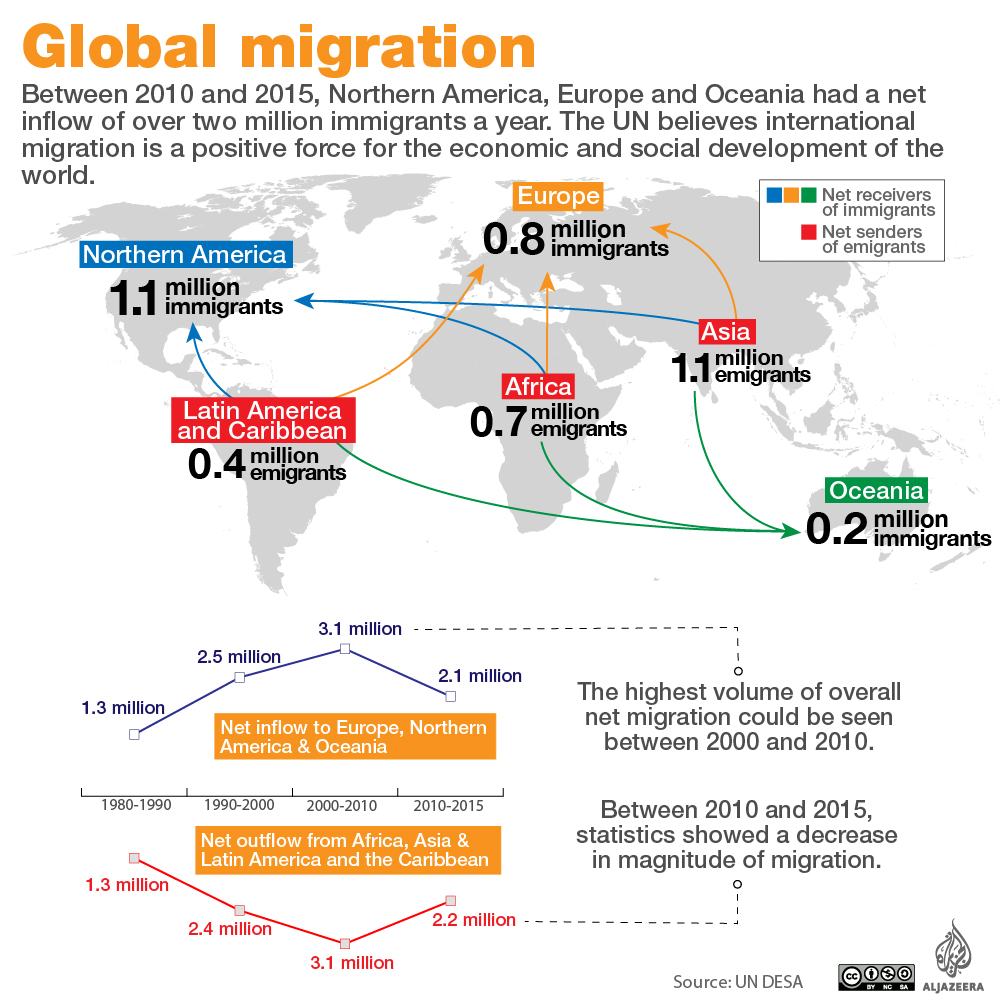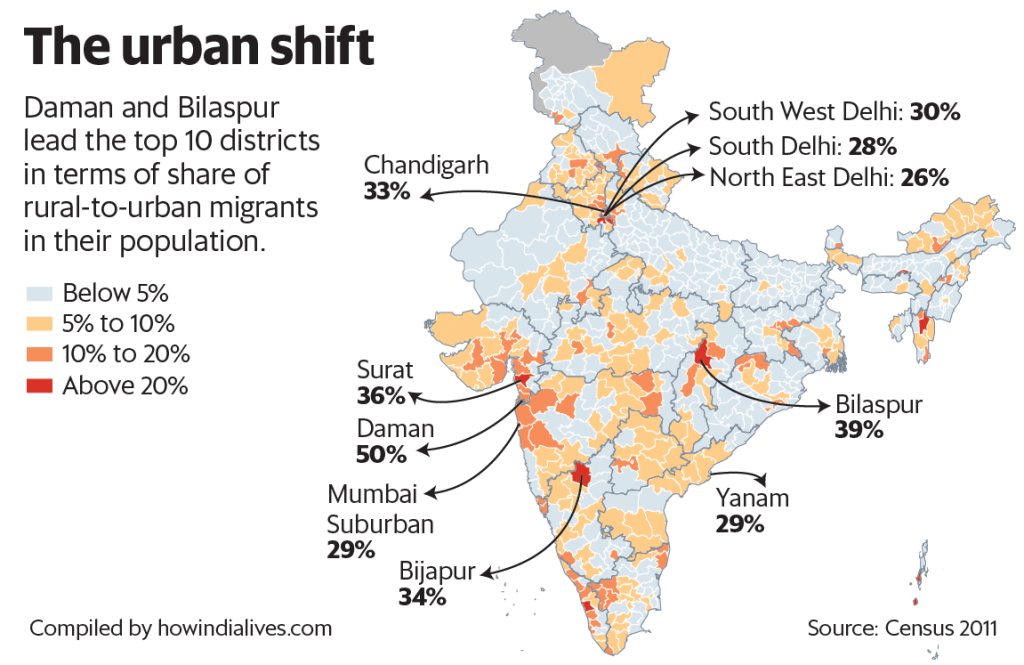Context:
When Prime Minister Narendra Modi announced the world’s most stringent lockdown on March 24, 2020 with barely four hours-notice, lakhs of migrant workers across the country found themselves trapped in a novel situation: their livelihood in the city was gone, but they could not return to their native villages.
Relevance:
GS Paper 2: Welfare Schemes (centre, states; performance, mechanisms, laws, institutions and bodies constituted for protection of vulnerable sections);
Mains Questions
- The active production of migrant labour and their invisibilised exploitation are two parallel processes that feed into each other. Elaborate. 15 marks
Dimensions of the Article
- What is Migration?
- Migrants in India
- Causes of internal migration in India
- Issues related to internal migration in India
- Measures to address these issues
- Way Forward
What is Migration?
Human migration involves the movement of people from one place to another with intentions of settling, permanently or temporarily, at a new location (geographic region).

Migrants in India
- The Census defines a migrant as a person residing in a place other than his/her place of birth (Place of Birth definition) or one who has changed his/ her usual place of residence to another place (change in usual place of residence or UPR definition).
- The number of internal migrants in India was 450 million as per the most recent 2011 census.
- Seasonal Migrants: Economic Survey of India 2017 estimates that there are 139 million seasonal or circular migrants in the country.
Causes of internal migration in India
- Unemployment in hinterland: An increasing number of people do not find sufficient economic opportunities in rural areas and move instead to towns and cities.
- Marriage: It is a common driver of internal migration in India, especially among women.
- Pull-factor from cities: Due to better employment opportunities, livelihood facilities etc cities of Mumbai, Delhi, and Kolkata are the largest destinations for internal migrants in India.

Issues related to internal migration in India
- Non-portability of entitlements for migrant labourers (such as the Public Distribution System) which further gets aggravated due to absence of identity documentation.
- Absence of reliable data: The current data structure lacks realistic statistical account of their number and an understanding of the nature of their mobility.
- Data on internal migration in India is principally drawn from two main sources –Census and the surveys carried out by the National Sample Survey Office. One of the main lacunae of both the Census and NSS surveys is their failure to adequately capture seasonal and/or short-term circular migration.
- A large majority of migrants hail from historically marginalized groups such as the SCs and STs, which adds an additional layer of vulnerability to their urban experiences.
- Exploitation by Employers and Contractors (Middlemen): in the form of Non-payment of wages, physical abuse, accidents. The existing legal machinery is not sensitive to the nature of legal disputes in the unorganized sector.
- Lack of Education: The issue of lack of access to education for children of migrants further aggravates the intergenerational transmission of poverty.
- Housing: Migration and slums are inextricably linked, as labor demand in cities and the resulting rural-to-urban migration creates greater pressures to accommodate more people.
- Social Exclusion: Since the local language and culture is different from that of their region of origin they also face harassment and political exclusion.
- Due to migrant’s mobile nature, they don’t find any place in the manifestos of trade unions.
- Stuck in the cycle of poverty: Most migrants are generationally stuck in a vicious cycle of poverty. (See infographic.)
Way Forward
- Universal food grain distribution: There are 585 lakh tonnes of grains stored in Food Corporation of India god owns, which could be proactively distributed.
- Direct cash transfers: Mechanisms could be evolved to deliver cash directly into the hands of people, instead of routing it through bank accounts.
- Inter-state coordination committee could be formed to ensure safe passage of migrants to their villages.
- Legal cell at the central and state levels could be created to protect wages. As there have been claims of non-payment of wages, forced leaves and retrenchments.
- Mapping of migrant workers: There is a need to create a database to map migrant workers scattered across the country. Government is planning to map migrant workers which would be first comprehensive exercise to map migrant workers scattered across sectors.
The challenges of the migrant problem are complex, also lack of recognition for migrants is still to be fully addressed. But if policy makers are able to recognize migrant workers as a dynamic part of a changing India, migration instead of being part of the problem will start becoming part of the solution.
Background
1: Internally Displaced People: Internal Migration due to disasters
- India had the highest number of new disaster displacements (five million) in the world in 2019 as per the Global Report on Internal Displacement, 2020.
- These were the result of a combination of increasing hazard intensity, high population exposure, conflicts and high levels of social and economic vulnerability.
- 590,000 people live in internal displacement as a result of disasters in India. New disaster displacements were a result of various cyclones like Fani, Vayu, Bulbul etc along with south west monsoon and droughts in various parts.
- IDPs are different from refugees in that, having not crossed a border, they are not typically covered by international refugee protections. They remain subjected to national laws, and as such are afforded less protection.




